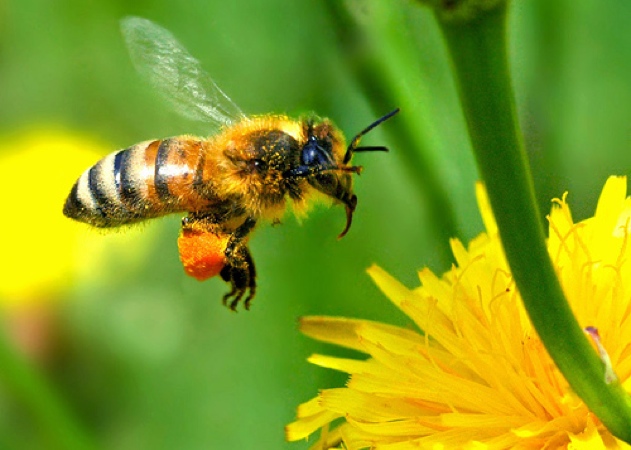
Pollinator loss “would be nothing short of catastrophic” says Environmental Commissioner
Food in Canada
Food In Canada Fruit & Vegetables Specialty Foods honey bees neonicotinoids pollinator healthECO released its annual report, tackling a number of topics, including neonicotinoids and honey bee declines, which may be a warning of a larger ecological problem

Toronto, Ont. – Pollinators – including bees, moths, flies, wasps, beetles, butterflies, bats and birds – are integral to Ontario’s environmental and socio-economic welfare, and “their loss would be nothing short of catastrophic.”
Those are tough words from Gord Miller, the Environmental Commissioner of Ontario (ECO), who released his annual report this week.
Called Managing New Challenges, the report tackles everything from the Environmental Bill of Rights, the environmental impacts on agriculture, and reviews the Ministry of Natural Resources and the Ontario Ministry of the Environment.
Some of the issues Miller examines include the Aamjiwnaang First Nation and the air pollution that threatens their health; how commercial timber harvesting is still allowed in Algonquin Park; and Ontario’s Growth Plan for the Greater Golden Horseshoe, which is not on track to meet its goal of curbing urban sprawl.
Bees and other pollinators
And when it comes to the health of bees and other pollinators, Miller says what he sees “is the biggest threat to the structure and ecological integrity of the ecosystem that I have ever encountered in my life, bigger than DDT.”
The neonicotinoid class of pesticides, which have been linked to bee deaths, are more toxic than DDT, reports Kitchener.CTVnews.ca.
Miller’s report says in Ontario, most fruits, vegetables and forages rely on animal pollination. Globally, pollinators are involved in an estimated 35 per cent of food production, and 87 per cent of the world’s major food crops depend pollinators to some extent.
In fact, says the report, over the last half century, pollinator-dependent agricultural production has increased by more than 300 per cent, and the total economic value of pollination in agricultural production has been estimated at $213 billion.
If we lost a species within a pollination network, it could trigger further reductions in biodiversity that could cascade throughout the food chain, warns the report.
Declines and responses
In North America, Europe and other parts of the world, abnormal declines in honey bee populations have been noticed. A number of factors are believed to be behind the deaths, which could just make honey bees more susceptible to disease.
Lately, the report says, pesticides have been receiving more and more attention. A number of studies have also concluded that neonicotinoids can cause adverse sublethal effects on honey and bumble bees.
But while the neonicotinoids are in the spotlight, honey bee declines may be a warning of a larger ecological problem, says the report.
Troubling questions are being raised about the broader environmental effects of these pecticides. Only a small portion of the active substance is taken up by plants in seed-treated crops, and the rest enters the environment.
This is of concern because neonicotinoids are not only persistent in soil and water but are also water soluble and highly mobile within ecosystems.
Governments in Canada and other parts of the world are taking action, with more studies, precautions and looking at other pest management options. And so are agriculture organizations by implementing best practices when using neonicotinoids.
ECO says it commends all these efforts, but reducing exposure to neonicotinoids presents an immediate challenge, fully protecting our pollinators requires a more comprehensive and long-term approach.
Print this page